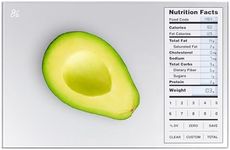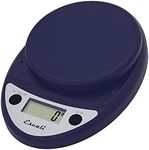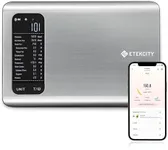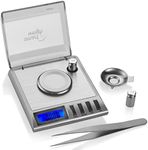Buying Guide for the Best Nutritional Food Scales
Choosing the right nutritional food scale can make a significant difference in managing your diet and ensuring you get the right nutrients. A good food scale helps you measure your food accurately, which is essential for portion control, calorie counting, and maintaining a balanced diet. When selecting a nutritional food scale, consider the following key specifications to find the best fit for your needs.AccuracyAccuracy refers to how precisely the scale can measure the weight of your food. This is important because even small discrepancies can affect your nutritional calculations. Scales with higher accuracy are typically more reliable. Look for scales that measure in increments of 0.1 grams for the most precise measurements. If you are very meticulous about your diet, opt for a scale with higher accuracy. For general use, a scale with 1-gram increments may suffice.
Maximum CapacityMaximum capacity is the highest weight the scale can measure. This is important if you plan to weigh large quantities of food. Scales with a higher maximum capacity are more versatile. If you often cook in bulk or weigh heavy items, choose a scale with a higher capacity, such as 10 kilograms. For everyday use and smaller portions, a scale with a capacity of 5 kilograms or less should be adequate.
Nutritional DatabaseA nutritional database is a feature that provides nutritional information for various foods. This is important for tracking your intake of calories, macronutrients, and other nutrients. Some scales come with built-in databases, while others connect to apps or websites. If you want detailed nutritional information at your fingertips, choose a scale with a comprehensive database. If you prefer to look up information manually or use a separate app, this feature may be less critical.
DisplayThe display is where you read the measurements and other information. A clear, easy-to-read display is important for convenience and accuracy. Look for scales with large, backlit displays that are easy to read in different lighting conditions. If you have vision issues or often cook in dimly lit areas, prioritize a scale with a high-contrast, illuminated display. For general use, a standard digital display should be sufficient.
Units of MeasurementUnits of measurement refer to the different ways the scale can display weight (grams, ounces, pounds, etc.). This is important for versatility and convenience, especially if you use recipes from different regions. Choose a scale that offers multiple units of measurement to easily switch between them as needed. If you primarily use one unit, ensure the scale supports it, but having multiple options can be beneficial for diverse cooking needs.
Tare FunctionThe tare function allows you to reset the scale to zero after placing a container on it. This is important for accurately measuring the weight of your food without including the container's weight. Look for scales with an easy-to-use tare function. If you frequently measure ingredients in bowls or other containers, this feature is essential. For simple, direct measurements, it may be less critical but still useful.
PortabilityPortability refers to how easy it is to move and store the scale. This is important if you have limited kitchen space or plan to take the scale with you. Compact, lightweight scales are more portable. If you need a scale that you can easily store or travel with, choose a smaller, lighter model. For a stationary kitchen tool, portability may be less of a concern, but a compact design can still save space.
Power SourceThe power source is how the scale is powered, typically batteries or a rechargeable option. This is important for convenience and long-term use. Battery-operated scales are portable and easy to replace, while rechargeable scales can save money on batteries. If you prefer a low-maintenance option, consider a rechargeable scale. For occasional use, battery-operated scales are usually sufficient and more convenient.




















